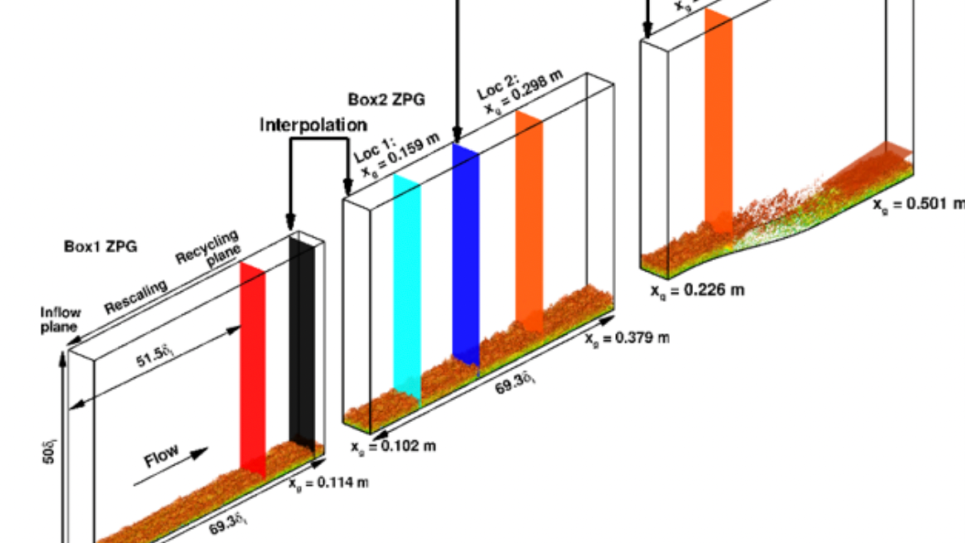
Computational domain and simulation setup for DNS of hypersonic turbulent boundary layers subjected to pressure gradients on smooth walls via backward facing curvature and forward facing curvature done by the OSU group, with the flow conditions and curved-wall geometries and the flow conditions of the DNS matching those measured in TAMU high-speed blown-down wind tunnel (Adapted from Nicholson et al. [5], [6]).